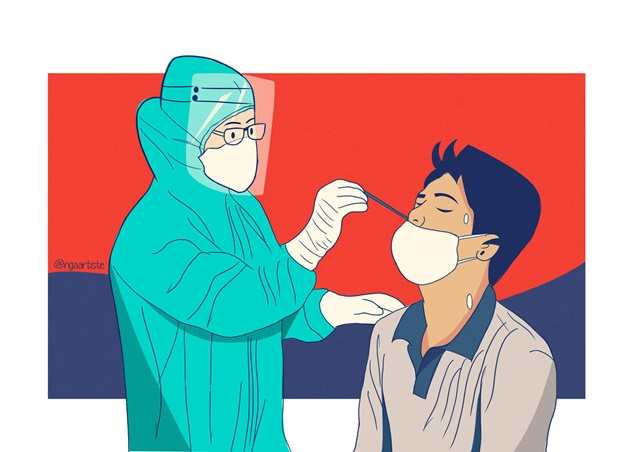When Can Rhinoplasty Be Repeated? Timing, Risks, and a Practical Guide
People are often surprised that a “nose job” keeps changing long after the cast comes off. That’s normal. Nasal tissue heals in layers—skin, soft tissue, cartilage, bone—and each settles at its own pace. If your outcome isn’t what you hoped for, you may wonder when rhinoplasty can be repeated. The short version: timing matters more than most patients think. Rushing a revision usually risks trading one problem for another.
Most patients should wait ~12 months after primary rhinoplasty before considering a repeat procedure so swelling resolves and scars mature. Earlier revision is reserved for urgent functional or structural issues.
Why timing matters for revision rhinoplasty
After surgery, inflammation fades from the inside out. Cartilage memory relaxes, edema resolves, and scar tissue reorganizes. Surgeons watch for three milestones before green‑lighting a repeat procedure:
- Stable shape — the contour isn’t shifting month to month.
- Scar maturation — internal and external scars soften, typically over ~12 months.
- Predictable tissue response — the nose feels less “tight,” making results more reliable.
Most uncomplicated cases benefit from waiting 12 months after the primary rhinoplasty. Some need longer—especially thick skin tips or extensive grafting—while limited touch‑ups may be safe a bit sooner.
Typical timelines: what’s realistic?
0–3 months: early healing
Swelling and stiffness dominate. The tip often looks fuller; small you can mask irregularities by edema. Decision-making here is unreliable unless there’s a clear complication.
3–6 months: contour emerging: When Can Rhinoplasty Be Repeated
Definition improves. Minor asymmetries are easier to judge, but ongoing scar remodeling means outcomes are still changing.
6–12 months: settling phase
Edema largely resolves; the final contour and airway function are easier to assess. Many surgeons schedule a serious revision consult around the 9–12 month mark if concerns persist.
12+ months: true baseline: When Can Rhinoplasty Be Repeated
Scar tissue has softened; cartilage position is more stable. If you need a revision, this window generally offers the most predictable results.
Exceptions: when earlier revision makes sense
There are legitimate reasons to operate sooner than a year, though they’re the minority:
- Severe airway obstruction (e.g., collapsed internal valve) that doesn’t respond to conservative measures.
- Marked septal deviation or hematoma threatening cartilage health.
- Significant graft displacement or infection requiring removal or repositioning.
- Early traumatic injury that disturbs the surgical result.
In these scenarios, timing balances risk against harm from delay. Limited, targeted corrections—rather than full overhauls—are common.
When Can Rhinoplasty Be Repeated: How to know if a repeat is truly needed
Before deciding, take stock using this practical checklist:
- Function: Are you breathing comfortably through both sides during rest and light exercise?
- Stability: Have photos looked essentially the same for 3–4 months?
- Skin quality: Is the skin supple, not rigid or shiny from tension?
- Expectations: Are your goals achievable with your skin thickness and cartilage support?
If you answer “no” to function or stability, waiting—or addressing non‑surgical issues first—may save you a second recovery.
What changes are realistic the second time?
Revision rhinoplasty is often more complex. Support structures may be thinner, and you commonly need grafts to rebuild framework and improve airflow. Realistic improvements include:
- Refining tip definition or rotation within anatomical limits
- Straightening a deviated dorsum or smoothing small irregularities
- Reinforcing valves with spreader or batten grafts to aid breathing
- Correcting graft visibility or asymmetry from the first surgery
Large shape changes are still possible, but trade‑offs—like thicker graft edges in very thin skin—you must weigh carefully.
Preparing for a revision: steps that improve outcomes
- Gather a timeline of photos at 1, 3, 6, 9, and 12 months. Stability matters.
- Document function: brief notes on sleep, exercise, and congestion patterns.
- Request operative records from your first surgeon. Details guide graft and approach decisions.
- Consider a second opinion from a surgeon who routinely performs revisions.
- Optimize skin and swelling: your surgeon may recommend taping, nasal hygiene, or steroid micro‑doses in select cases.
When Can Rhinoplasty Be Repeated: Risks and how to reduce them
Every re‑operation adds variables: unpredictable scar planes, limited native cartilage, and higher swelling duration. You can curb risk by ensuring:
- Timing is adequate for scar maturation (usually ~12 months).
- You plan Graft sources (septal, auricular, or costal cartilage) if needed.
- Goals are specific and prioritized so the plan targets what matters most.
- Aftercare is clear—splints, taping, activity limits, and follow‑ups.
When Can Rhinoplasty Be Repeated Cost, recovery, and expectations
Revision procedures are typically longer and costlier than primary rhinoplasty. Recovery often feels familiar but slower in the tip and sidewalls. Visible swelling may fade in 2–4 weeks, while fine refinements continue for months. Setting a realistic arc—improvement, not perfection—keeps satisfaction high.
Bottom line: when can rhinoplasty be repeated?
For most patients, the safest, most predictable window opens around 12 months after the initial surgery. You reserve earlier revision for urgent functional or structural issues. If you’re still healing, give your nose the time it needs; if your concerns are stable after a year, a focused revision consult is reasonable.
Helpful related resources on our site
- Rhinoplasty swelling timeline: month‑by‑month changes
- Breathing issues after surgery: understanding nasal valve collapse
- Cartilage grafts explained: spreader, batten, and tip support
- How to choose a surgeon for revision rhinoplasty
- Recovery checklist: habits that speed healing
When Can Rhinoplasty Be Repeated: Quick FAQs
Is a year always necessary?
Not always, but it’s a reliable benchmark. Some limited touch‑ups might be reasonable around 6–9 months if healing is stable and goals are modest.
Can non‑surgical options help while I wait?
Yes. Strategic taping, nasal hygiene, and in select cases tiny steroid doses can reduce stiffness or focal swelling—always under your surgeon’s guidance.
How do I prepare for the consult?
Bring dated photos, a short symptoms log, and operative notes. Be ready to rank your top two goals.













